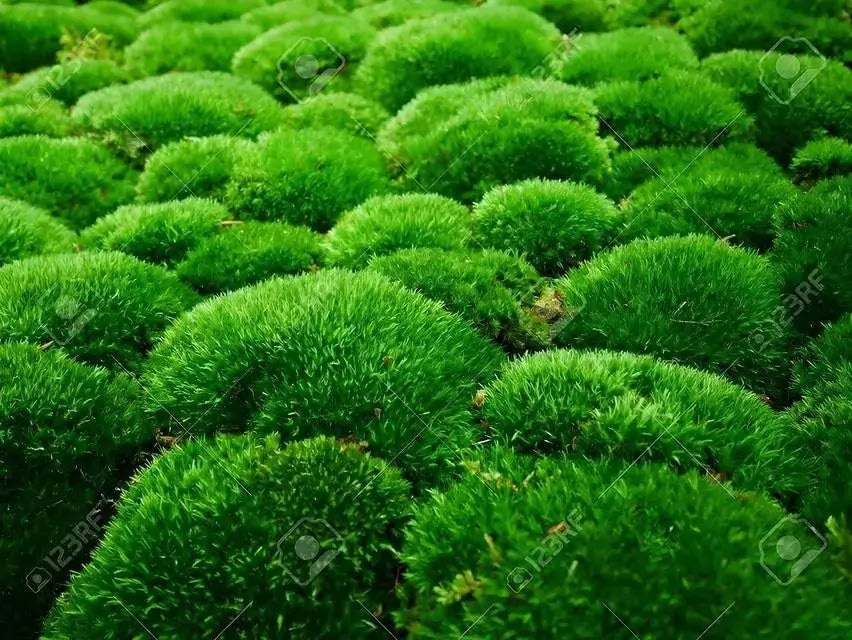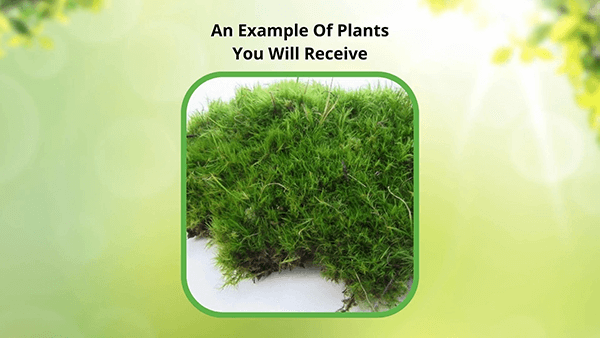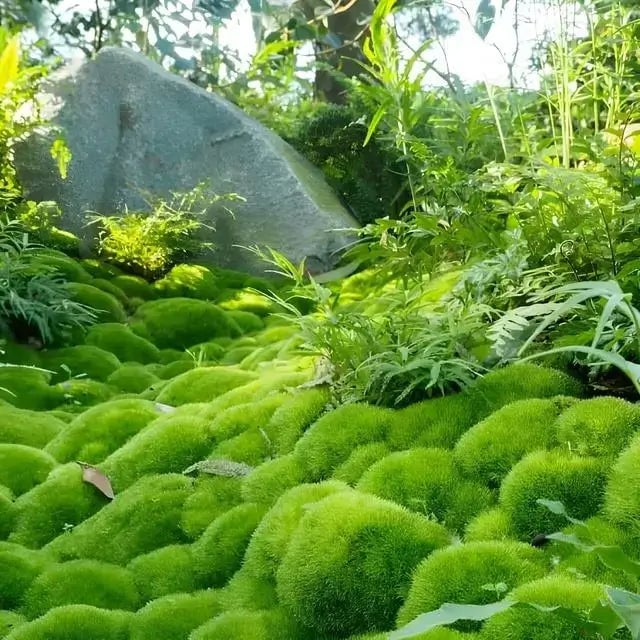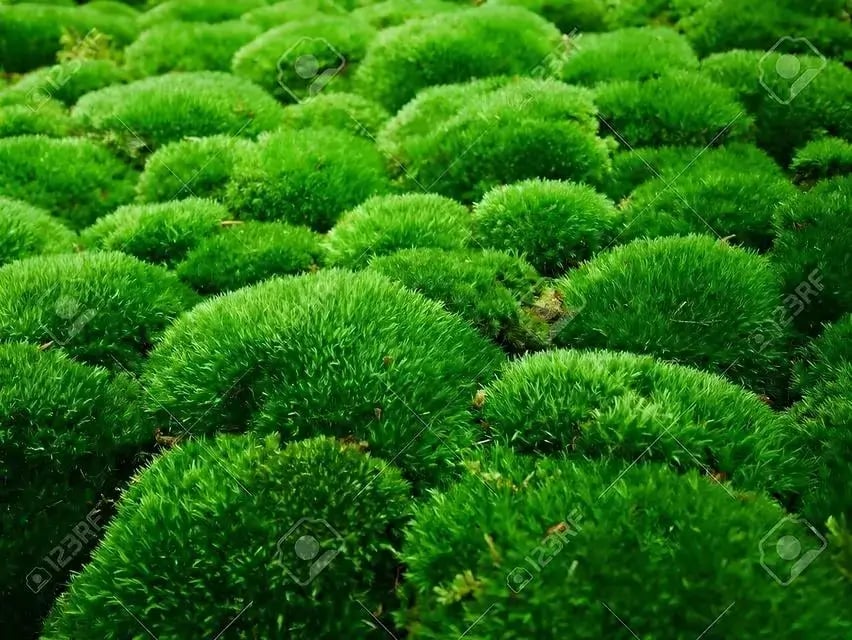



Cushion Moss
Natural carpet for shady areas
Provides excellent soil erosion control
Low-maintenance and hardy plant
Thrives in
ZONE 4ZONE 5ZONE 6ZONE 7ZONE 8ZONE 9ZONE 10This plant ships:
Ships 7-10 Days1 Year Guarantee on all plants
Cushion Moss - Leucobryum glaucum
Cushion Moss is the lovely, lush, and pillowy green moss that you may find on rocks while hiking your favorite trails. A big fan of shady, moist environments, this plant is a companion found often in shade landscapes. The mounding effect of this plant is breathtaking and adds a bunch of whimsy when cultivated in gardens. Its stout leaf blades can range from deep green to a bright white, adding a layer of spiky texture. The mounds can be grown into perfect circles, or into intriguing shapes as they spread slowly to fill in the gaps around.
Family: Leucobryaceae
Light Requirement: Partial Shade - Full Shade
Water Needs: Moderate - High
Height: 2-4 in.
Spread: Forms dense clumps up to 12 inches wide or more
Growth Rate: Slow - Moderate
Wildlife Value: Retains beneficial moisture, provides habitats for microscopic creatures
This plant is a steady, slower grower with a horizontally spreading habit. The leaves are extremely dense and short, only a few millimeters long, and are what give the plant a unique appearance and texture. Being a moss, it has a unique root structure known as rhizoid. Instead of a normal root system which burrows into soil to deliver nutrients to the plant, rhizoids are shallow and simply anchor the plant to the surrounding surface or substrate. Because of the short roots, it is very important that the area is sufficiently moist at all times to ensure a constant water source.
Landscape Uses and Maintenance - Cushion Moss
This plant has a high preference for acidic, sandy soils and requires a consistent source of moisture. Other than that, it is not picky. In fact, this plant is known for having the ability to regrow itself after being dislodged completely! This is what makes Cushion Moss a very popular pick not only for the landscape, but for decorative living terrariums as well. The adaptability of this soft plant allows room for exploration. This plant will grow on many different types of substrates so long as they are not too loose or overwhelmingly nutrient-dense. Well-draining moist soil is optimal, but stone is another great option for cultivation when grown in humid environments.
Noteworthy Characteristics
From far away, Cushion Moss has a subtle sort of beauty appearing as a soft and fluffy green cloud. But upon close inspection, you will notice the leaves are quite spiky in appearance, forming upwards micro-clumps that come together to form the larger mound structure. This moss is known for its iconic circular presentation and can be used in all sorts of creative ways, whether in a garden or in a terrarium.
This Is How Your Plants Will Look upon Delivery

Height at Maturity
Under 6 Inches
Care
Cushion Moss thrives in moist, well-drained soil. Keep the soil always damp but not soggy. It's resilient to temperature changes so that it can handle a range of climates. Trim occasionally to maintain shape and remove any dead patches.
Plant Reproduction
Cushion Moss spreads through tiny spores and creeping stems.
Choose early spring or fall when the soil is moist and cool to plant healthy bare-root ferns. You can also use dormant plants to grow year-round. When you arrive, please soak the roots in water for several hours to rehydrate them. Ferns thrive in moist and shaded areas. Dig a hole wide and deep enough to spread out the roots comfortably. Position the fern so the crown (where the roots meet the fronds) is just at or slightly below ground level. Gently backfill with soil firmly around the roots, and thoroughly water to settle the soil and eliminate air pockets. Apply a 2-3 inch layer of mulch for weed control and to retain moisture, ensuring the mulch does not touch the crown. Water during dry periods is used to keep soil moist but not soggy. Avoid fertilizing in the first year, as ferns prefer nutrient-rich soil over direct fertilization.
Shipping date depends on the date displayed and chosen when you order from the product's page.
We only accept returns on plants verified dead. If you think your plants have died, we offer a 1 year warranty, please use this File a Claim Link to verify dead plants and start with return warranty process.






Lush Ground Cover:
Cushion Moss creates a thick, velvety carpet that enhances the beauty of shaded and damp areas. Its dense growth provides a rich, green backdrop that adds a touch of tranquility to any garden or indoor space.
Eco-Friendly Option:
As a natural and sustainable choice, Cushion Moss supports eco-friendly gardening practices. Its low water and nutrient requirements make it an environmentally conscious option for green spaces.
Low Maintenance:
This moss is incredibly easy to care for, requiring minimal watering and no mowing. It thrives in low-light conditions, making it perfect for spots where other plants might struggle.
Versatile Use:
Cushion Moss is ideal for various applications, including garden beds, terrariums, and decorative containers. Its adaptability allows you to use it in different settings, from outdoor landscapes to indoor plant arrangements.
Caring Tips
How do I care for my Cushion Moss?
Each box contains detailed care instructions and information about your product. But here's the basics.
Care Tips
Cushion Moss thrives in moist, well-drained soil. Keep the soil always damp but not soggy. It's resilient to temperature changes so that it can handle a range of climates. Trim occasionally to maintain shape and remove any dead patches.
Light Requirements
Cushion Moss thrives in low to moderate light conditions. It prefers indirect sunlight or shaded areas, making it ideal for locations with filtered light or dappled shade. Direct sunlight can dry it out and cause it to become less lush.
Hardy Planting Zones
4 • 5 • 6 • 7 • 8 • 9 • 10
Header
Use this content to share information about your store and products.
Frequently Asked Questions
How often should I water my plants?
How do I know if my plant is getting too much or too little sunlight?
What should I do to prepare my plants for winter?
What are the signs that my plant needs fertilizing?
How can I prevent pests from damaging my plants?
How do I choose the right plant for my climate zone?







